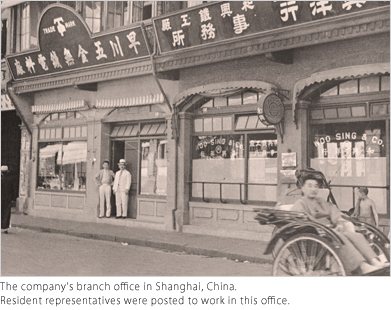1926 - 1935
Foresight Not Only for Products, but Also in Developing Sales Channels
Tokuji’s claim to fame lies not only in his talents as an engineer, but also in the business acumen he acquired in selling pencils in the stall at the night market, an experience he had during his apprenticeship. In Japan, the radio broadcasting network continued to expand from urban centers to rural areas, and in response, the company expanded their sales offices across the country. Further, in 1926, the year after the development of the crystal radio, they began exporting and supplying radio parts outside of Japan, including China, Southeast Asia, India, and South America. In addition, to promote sales, they held “radio fairs” in various areas, or mounted “caravans” with a fleet of cars. They also organized “touring study groups” incorporating what we would now call “field marketing activities” that traveled around visiting dealers to ask about requests for new product features and learn what needed improvement. They also instituted a “benefit coupon” system to share profits with dealers. In this way, they strived to get reliable feedback from dealers and users while pitching the product at the same time. They had already begun to work in a modern business style that took advantage of these efforts in product manufacturing and marketing, and also promised a healthy profit to dealers.


